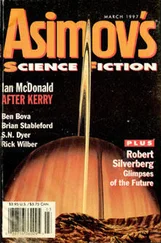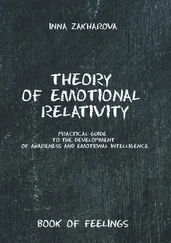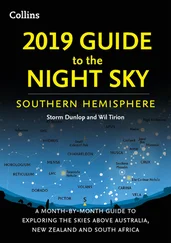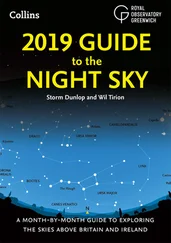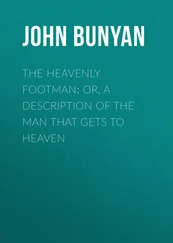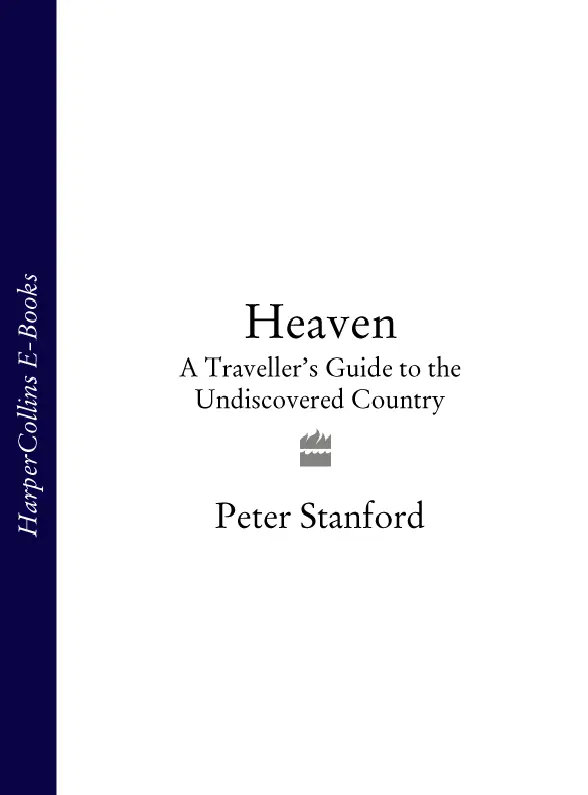

A TRAVELLER’S GUIDE TO
THE UNDISCOVERED COUNTRY
To my mother, Mary Catherine Stanford (1921–1998), in the hope that the very best of what follows may now be true for her
and
To my mother-in-law, Emily Celine Cross (1934–2001), who inspired me with her trust in God to believe that it could be .
‘The undiscovered country, from whose bourn No traveller returns …’
SHAKESPEARE: Hamlet (Act III, Scene 1)
Cover
Title Page
Dedication
Epigraph
List of Illustrations
Introduction
PART ONE Knowledge of Angels
1 Dust to Dust
Traveller’s Tales: 1
2 Come Back and Finish What You Started
3 But Not Life as We Know it
4 The Compensation Culture
5 Fly Me to the Moon
PART TWO And the Soul Goes Marching On
6 Safe in My Garden
Traveller’s Tales: 2
7 Space Oddity
8 Star-Man
9 Tomorrow’s World
10 If Paradise Was Half as Nice
Traveller’s Tales: 3
11 A Delectable Death
12 Reach for the Sky
PART THREE Above Us, Only Sky
13 The Borderlands
Traveller’s Tales: 4
14 I Hear You Knocking
15 Speaking Words of Wisdom?
16 Man is What He Eats
17 The Sound of Silence
18 Through the Keyhole
19 An Indian Summer
20 A Village in Heaven
Traveller’s Tales: 5
21 But I’ve Never Been to Me
Source Notes
Index
Acknowledgements
About the Author
Praise
Other Works
Copyright
About the Publisher
Ascent of the Prophet Muhammad to Heaven by Aqa Mirak, 16th century.
© British Library/Bridgeman Art Library
Saint Augustine of Hippo. © Mary Evans Picture Library
Saint Hildegard. © Mary Evans Picture Library
Thomas Aquinas. © Mary Evans Picture Library
Chartres Cathedral, West side. © The Bridgeman Art Library
Land of Cockaigne by Pieter Brueghel. Alte Pinakothek, Munich. © The Bridgeman Art Library
Detail from The Damned by Luca Signorelli. © Scala
Dante portrait. © Scala
Ascent into the Empyrean by Hieronymus Bosch. Palazzo Ducale, Venice. © The Bridgeman Art Library
Dante and Beatrice, from Dante’s Divine Comedy , 1480, by Sandro Botticelli. © Bibliotheque Nationale/The Bridgeman Art Library
Emmanuel Swedenborg. © Mary Evans Picture Library
Cities in the Spirit World , 18th century by Emmanuel Swedenborg. Reproduced courtesy of The Swedenborg Society
The Marriage of Heaven and Hell, As a New Heaven is Begun , c. 1790, by William Blake. © The Bridgeman Art Library
Last Judgement by William Blake. © A.C. Cooper/The National Trust Photographic Library
The Gates Ajar
Spiritualism photo
Sir Arthur Conan Doyle and Houdini. © Mary Evans Picture Library
The Resurrection: Cookham , 1924–7 by Sir Stanley Spencer. © Tate, London 2002
Illustration from The Last Battle by C.S. Lewis. © Pauline Baynes
Buddhist temple. © Ian Cumming/Tibet Images
It is five in the morning and my five-month-old baby daughter, already settled into a pattern as an inveterate dawn riser, is shifting around in my arms, her eyes wide open, her back arching, and looking every inch a miniature version of my own mother. It is not so much the composition and arrangement of her features that bridges the generations, as a particular grimace of steely resolution that she makes, and the look she sometimes gives, with eyes guarded and slightly nervous, as she weighs you up before volunteering a broad but bashful smile. In these moments, the coincidence of her birth and my mother’s death within twelve months of each other makes me believe, without a shadow of a doubt, in reincarnation.
Bleary-eyed through lack of sleep, I see such a familiar expression that unthinkingly I latch on to it. For an instant I am as true a believer in reincarnation as if I were kneeling in saffron-coloured robes in a temple in the East: for, despite however many rules of science it violates, it seems so obvious that some essence of the life that is now over has been reborn in the new life in front of me. I even convince myself that it’s more than just the looks: they seem to share the same spirit – determined, unswerving, but cautious. As I slip back into a half-slumber, my daughter is distracted by an old watch strap, which she sucks and stretches. I add a few Christian ingredients to my Buddhist brew and fondly conjure up a scene in that mythical white tunnel which, in the standard church imagery of heaven, links this world to the next. There is, I imagine, a halfway point where those going back to the pavilion pass those going out to the crease. My mother and my daughter are both there, frozen in time, suddenly alone and utterly absorbed in each other. In my dream both can walk, though for the last twenty-five years of her life my mother was a wheelchair user. They embrace, and, as they take their leave to go in opposite directions, my mother kisses my daughter gently and hands over a parcel of her own characteristics, her legacy to the grand-daughter whom she will never know in straightforward earthly terms.
At this point in the dream my wife wakens me, and suddenly our daughter, who is still doggedly playing with the watch strap, appears in an entirely different light – her own mother’s double. As swiftly as I signed up to my own hybrid version of afterlife, I now see its absurdity. My certainty dispels so quickly that I cannot even get a grip on what it was that had, only seconds before, seemed so cosy and real. Any assurance I had is gone.
Of course, when my mind is more alert and my thoughts more earthbound, I realise that the popularly understood concept of reincarnation is the ultimate comfort-blanket with which our age soothes away all the traumas and difficult questions of life. Reincarnation focuses on this life, which we know, rather than on some other life which we can only dream of. Thus it works in the short-term to assuage any anxiety about mortality, and can even take the edge off grieving. As a long-term prospect, though, it has its drawbacks. In the sixth century BC Buddha developed the already existing idea of samsara, constant rebirth, and regarded reincarnation as something negative. He wanted to liberate his followers from the cycle of dying and being born since, far from welcoming the prospect of having another go at life, many of them were terrified by the prospect of death after death. If they had had hospices and morphine perhaps they would have thought differently, but at that time it was considered bad enough to have to go through all those final agonies once, without having to do it ad infinitum. Buddha taught of nirvana, not as a physical place akin to heaven where one might get off the treadmill, but as a psychological state of release, separate from death, that could be achieved in this life.
Читать дальше



